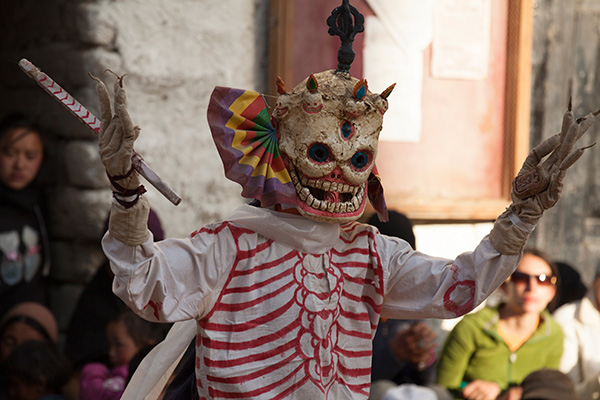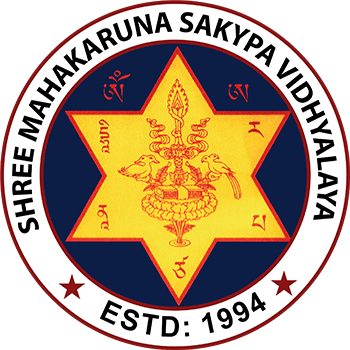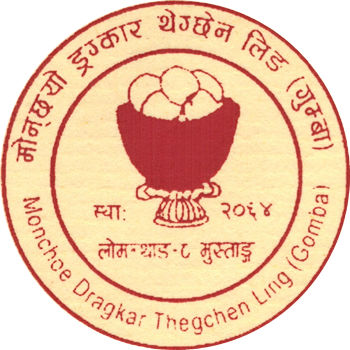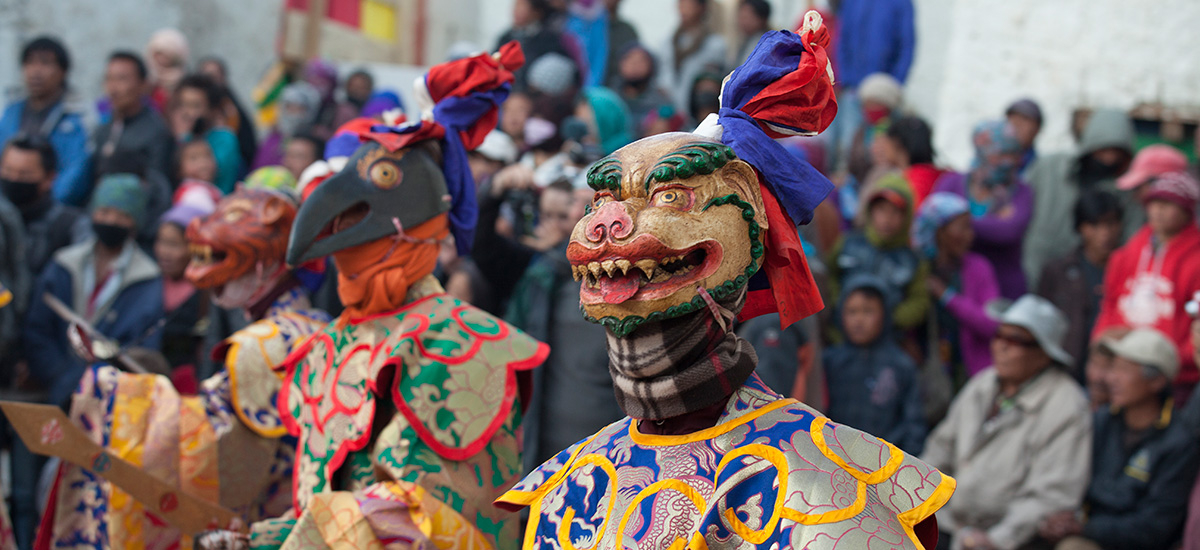Tenpa Chirim (bstan pa spyi rim) is colloquially known as Tiji, which is a corrupted version of the word Tenchi (bstan spyi). The religious festival was introduced during the time of Ama Pal, the independent ruler of Lo and Ngorchen Dorje Chang, the exalted being who brought Buddhism to Mustang. Tenchi, the Vajrakilaya ritual was brought into practice during the reign of Lowo Khenchen, son of the 3rd independent king of Lo Tsangchen Tashi Goen. The festival was conducted successfully for a long time.
The kingdom of Mustang was at height of prosperity during the reign of King Ahang Samdrub Palbar from 1656 to 1710. The legacy was widespread through Nepal, Tibet and India.
Lachen Choephel, a ruler of Dzongkhar in Ngari region of Tibet was envious of Lo’s glory and tried to sabotage the reign of the Mustang king through black magic. The religious king as well as the followers had nightmares of Lachen Choephel’s evil power. The Kingdom of Lo went through a period of degradation. The king suffered loss of six sons, imposing a severe threat to the existence of the lineage.
 Tsewang Lhundub Phuntsog, the King’s ecclesiastic son pursuing Buddhism in central Tibet received teachings from masters of the Sakya as well as Kagyupa and Nyingmapa lineages. He was overwhelmed by the dismal state of Lo and hence returned home. He ruled over Lo from 1711-1723 and later in life, erected statues of Guru Padmasambhava to redeem himself for having attended to worldly affairs. His son Tsewang Samdrub invited Dorje Sengye, a Buddhist adept from the lower region of Lo. Chogye Dorje Sengye was said to have arrived at the King’s palace on ray of sun.
Tsewang Lhundub Phuntsog, the King’s ecclesiastic son pursuing Buddhism in central Tibet received teachings from masters of the Sakya as well as Kagyupa and Nyingmapa lineages. He was overwhelmed by the dismal state of Lo and hence returned home. He ruled over Lo from 1711-1723 and later in life, erected statues of Guru Padmasambhava to redeem himself for having attended to worldly affairs. His son Tsewang Samdrub invited Dorje Sengye, a Buddhist adept from the lower region of Lo. Chogye Dorje Sengye was said to have arrived at the King’s palace on ray of sun.
Choegye Dorje Sengye neutralized the affects of the black magic imposed by the Dzongkar ruler through intensive rituals. The celebration of Tenchi festival had also waned during the troubled times. Chogye Dorje Sengye brought Tenpa Chirim ritual back in practice; of which Vajrakilaya is the principle deity. The region saw light of better days ever since the performance of the rituals. During the reign of Mustang Raja Ahang Jampel Dadul( 1815-1837) the lineage almost came to an end that he invited Ngawang Kunga Sonam, the then throne holder of Sakya to Lo. Ngawang Kunga Sonam performed most significantly the Varjakilaya ritual. The blessings of the ritual brought into this world Prince Ahang Kunga Norbu. To ward off obstacles in Lo, Ngawang Kunga Sonam shot an arrow from the Palace roof in direction of the white mass to the east of Lo Manthang during the Tenchi ritual. It is evident to these days that as a result, the white mass known as ‘Sa Karpo’ is as shaped as if about to crumble.
 The revolution of 1951 against the Rana regime in Nepal stripped Mustang Raja of his traditional status. Backed by young and educated Thakalis of lower Mustang, the ordinary working class of Lo fought against the King’s traditional right to levies and compulsory labor. A result of this activism was that even the old festivals of Mustang, such as Tenchi and Yartoen (horse racing festival) were banned.
The revolution of 1951 against the Rana regime in Nepal stripped Mustang Raja of his traditional status. Backed by young and educated Thakalis of lower Mustang, the ordinary working class of Lo fought against the King’s traditional right to levies and compulsory labor. A result of this activism was that even the old festivals of Mustang, such as Tenchi and Yartoen (horse racing festival) were banned.
The ordinary people of Lo are classified according to the various services they render the King such as providing soldiers, carrying letters around the kingdom, furnishing certain amount of wood or looking after the royal cattle. Pasang, a son of the wood furnishing household claimed to witness deities conveying the need to observe Tenpa Chirim to maintain peace and prosperity in Lo. There will be political unrest otherwise. He brought the message before Raja Ahang Jigme Dorje Palbar, the 22nd in line of lineage and the last official Raja of Mustang. Under the guidance of the former Raja and the Late Khenpo Jampa Tashi Tenzin of Lo Manthang monastery, Tenchi Chirim was brought back in practice and peace and prosperity prevailed in Lo indeed.
Tenchi festival is held annually for three days from the 27th of the 3rd lunar month onward according to Tibetan calendar.
Tenchi mask dance is typical of the Sakya tradition of Tibetan Buddhism. Lo Manthang is one of the few places around the world where Tenchi is observed with such fervor. This centuries old tradition with profound religious history has been a huge part of the ethnic community of Mustang. It draws a huge number of spectators from all over the world.



